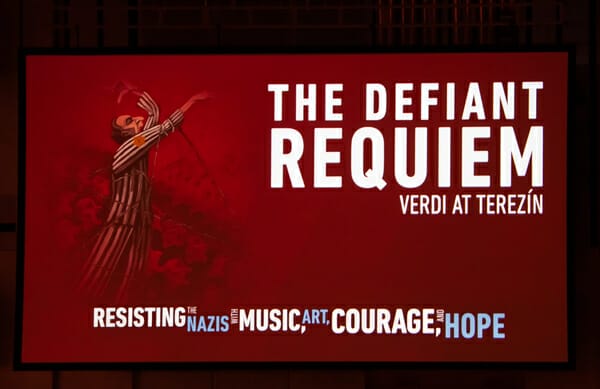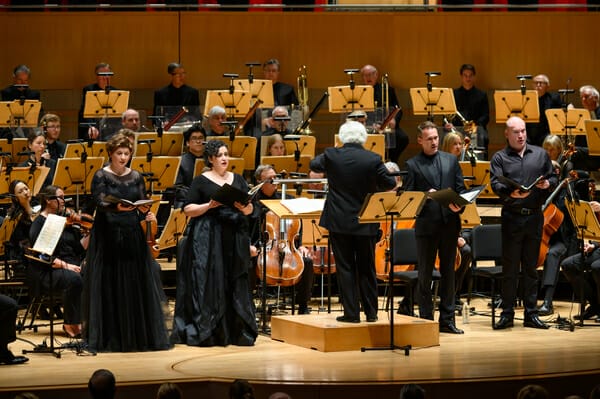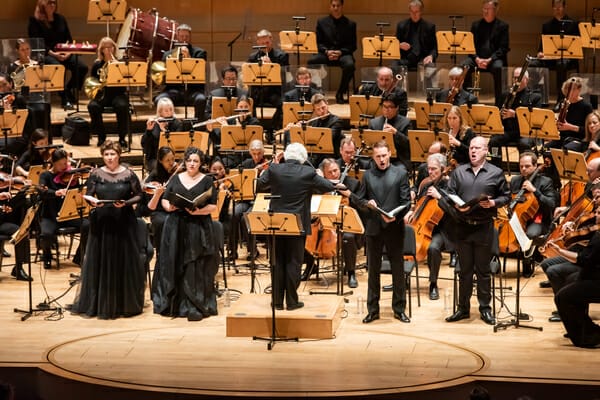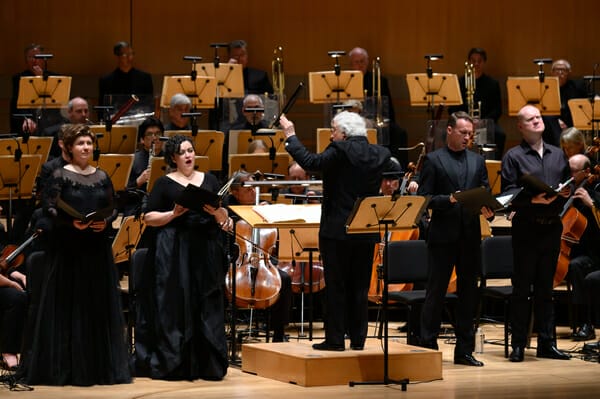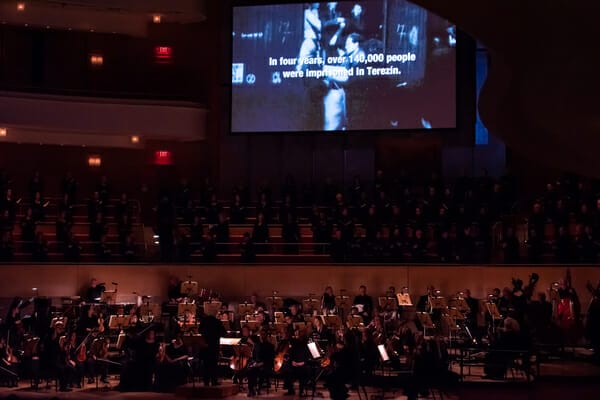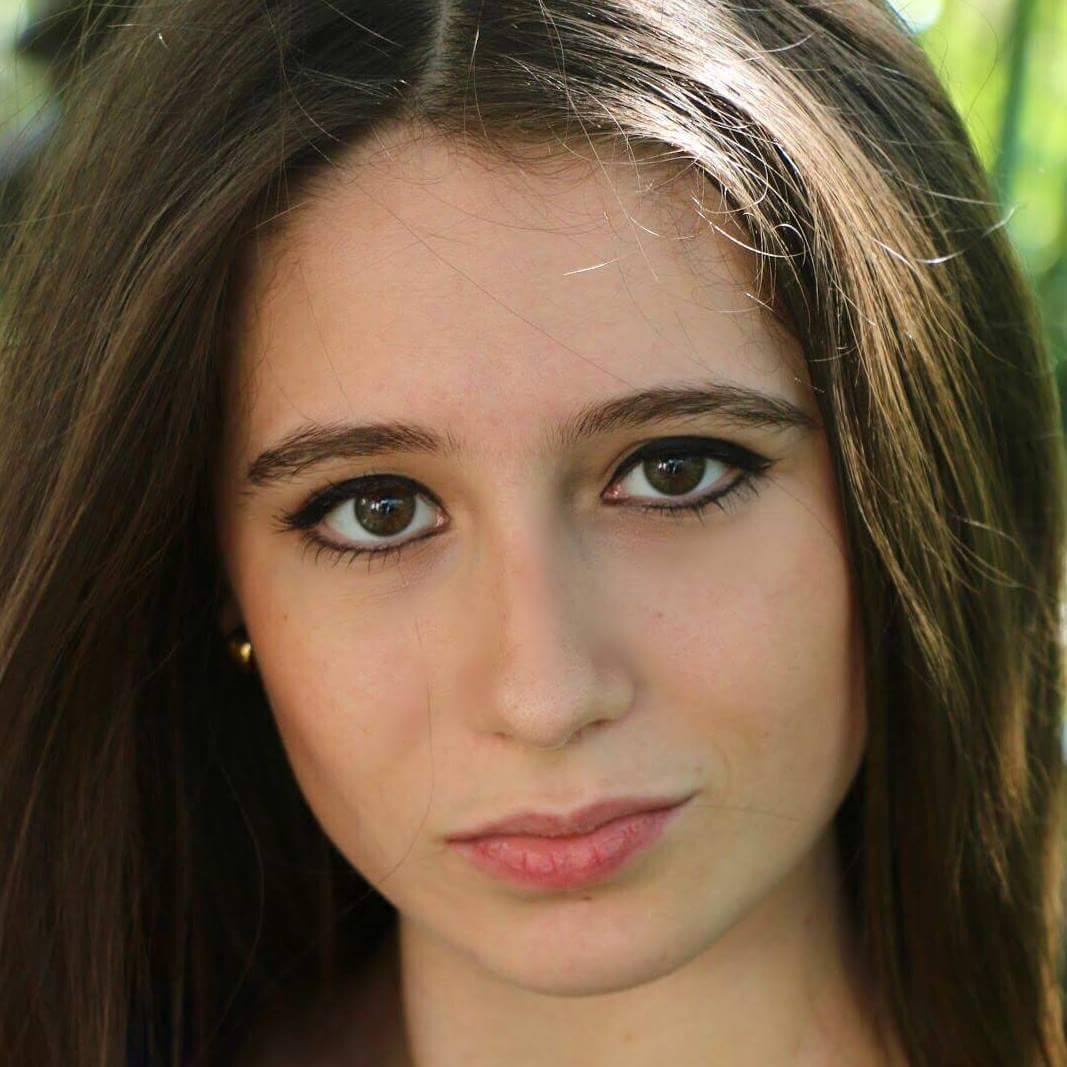Giuseppe Verdi’s Latin funeral mass is a passionate rumination on the grappling of the soul to attain salvation and eternal rest from suffering. Verdi was no stranger to loss. While still a young man, he daughter and son died in infancy, as well as his 26-year-old wife. He carried the grief of that tragic period throughout his life. As those shuffling through the pages of the program notes apprehended, years later in 1873, the poet and novelist Alessandro Manzoni, who Verdi esteemed almost beyond any other artist in his circle, succumbed to meningitis. Verdi poured his misery into a Requiem composed in his memory -- a work that despite the sacred subject matter and in the best possible sense, is one of his most operatic. Perhaps no other Requiem setting expounds on the theme of human frailty and helplessness at cosmic injustice with such dramatic intensity and with such a potent narrative impulse.
The grand opera-style Segerstrom Hall, housed in a building resembling a curtain made from undulating glass, was a fitting environment to contain the massive orchestral and choral forces of Verdi’s work. Rows upon rows of black-clad singers of the Pacific Chorale lined up behind the woodwinds, brass, percussion, and strings. However, the evening did not merely portend a typical concert performance of the piece. Another completely compatible layer of meaning was added through the telling of the story of Czech composer and conductor Rafael Schächter and the inmates of the Terezín concentration camp. Through the weaving of video projections of historical footage and survivor stories and recitations by actors representing Rafi Schachter and The Lecturer, followed by performances of the Requiem's movements, the public learned of the 16 performances that 150 Terezin inmates gave of Verdi's Requiem in 1943. Led by the visionary and courageous Schächter, who accompanied his singers on a dilapidated upright, the defiant singers learned the piece by memory from a single vocal score and performed the work for fellow prisoners, members of the German army, SS officers, and even the Red Cross. The conductor, described by his chorus members as their musical godsend, was sent to Auschwitz and perished. His musicians never forgot him. In the words of one of the survivors who sang under Schächter’s leadership: “The requiem saved my life as I am today (...) and made it possible to survive as a human being.” An elegant woman with an earnest spiritual intensity to her burning eyes, she expressed that through the music, she and the inmates felt that they were not bidden to lament that their God had deserted them, but rather to ask: where was man to do the good that God empowered on earth? “We returned to Verdi’s desk (...) we were far inside this mass, as if we were the source of its creation and inspiration”. The audience was invited throughout the evening to empathize with the experiences of the inmates, to apprehend the their strength to preserve their spirits through the desperate incorporeal consolation provided by art, and to recognize that the orchestral interludes performed that evening were the very same heard and clung to by the performers at Terezin seventy years ago.
At the start of every movement, a phantom light shone on pianist Rita Sloan as she provided stark piano accompaniment to the double choir or soloists. It was as if she were paying tribute to Schächter at his upright so that we might imagine him there before us. The orchestra would then join in with a flood of light, as if swelling to contain the full amplitude of the emotions inherent in Verdi’s music and in the experience of the Terezin survivors. The transition between narration and music was seamless and logical, except perhaps (in this reviewer’s opinion) when the heart-rending Libera Me was cut up into several sections.
The audience looked up at the video screen above the orchestra as one of the survivors rapturously expressed that Verdi’s music emanated from her, Schächter, and the men and women singing, and they were not merely replicating sounds, but enacting the meaning with the same feeling of necessity as a starving man running towards a piece of bread. As conductor Murry Sidlin reminded us as he spoke into his microphone in between movements, perhaps at no other time was the spiritual message of Verdi’s Requiem understood as profoundly as it was at Terezin.
Sidlin conceived of the concept behind the performance and has been highly decorated for his exhumation of the artistic life of Terezin, as well as a myriad of other projects related to the Holocaust and exile composers. Perhaps his general enthusiasm explains his many accomplishments. Sidlin reminded this reviewer of Leonard Bernstein, in that he led his orchestra, soloists, and choir with a larger-than-life showmanship, his silver mane flopping majestically as he exerted his entire body and beads of sweat rolled down his face. He leapt from his podium during the Dies Irae, eliciting a savage pummeling of the timpanis that sent a visceral frisson down the spines of every audience member. His assiduity produced generally full-throated and gorgeous results from his soloists, although at times the climaxes hurtled towards the principal singers like an avalanche.
The Dies Irae followed the deeply affecting words of one of the survivors and well-articulated readings by the actors standing at each side of the chorus. One dramatized excerpts from Schächter’s diary, which traced the resistance of Zionists within the camp to perform the Jewish composer Felix Mendelssohn's Elijah instead of Verdi’s Requiem with its Christian texts, which they reasoned were antithetical to their beliefs. Schächter, who was described later by one of his chorus members as “a strong human being with the will to do things” presented them the door, and they all stayed. On the contrary, the corollary between the inmates’ condition and defiance against the injustice enacted upon them and their people and the text is striking. “We will sing to them of the day of wrath”, the actor read. Soon after, the audience heard the choir ferociously intoning: “teste David cum Sibylla. Quantus tremor est futurus, quando judex est venturus cuncta stricte discussurus.” (“As David prophesied with the Sibyl. How great a terror there will be when the Judge shall come who will thresh out everything thoroughly.”)
Nathan Stark sang Mors Stupendit, the bass aria that affirms that all creation and death itself will answer incredulously to the pronouncements of a divine judge. His fine theatrical sense extended to the final “s” sound of the word “Mors” or death. When mezzo-soprano Ann McMahon Quintero performed the Liber Scriptus, the robust chestiness of her lower range balanced quivering high notes that registered as ire-full outbursts. Some audience members fall back in their seats inadvertently.
Many imposing and noble musical moments occurred before the conceptual thread was taken up once more. A mournful clarinet introduced Quid Sum Miser for soprano, mezzo, and tenor, in which the tenor and soprano’s portamenti were unrestrained during their exposed duets. The Rex tremendae served as an entreaty to a “Found of Pity” to save our spirits. A piece of overpowering majesty, it nevertheless contains a weighty atmosphere that reminds one of how insignificant the speaker is before the Lord. The bass made the interpretative choice to being the chorus back in with a mincingly soft tone. The Recordare brought the dotted eighth-note woodwind pattern to the fore, reminding the attentive listener of the insistent rhythmic figuration in the preceding Salva me. The soprano’s golden tone and rounded vowels drew the auditor in, as well as her expressive outburst coloring the words “ante diem rationis” (“before the day of reckoning”). In this writer’s view she is definitely an expressive singer. Her high Ab sacrificed its sheen and ring for a pianissimo. Tenor Edgaras Montvidas made no such sacrifices in the Ingemisco. In his full Slavic tone, ardently employed in his freely ringing ascents to higher notes, we sensed the radiance accompanying the sinner’s hope for mercy. An oboe encapsulated the pastoral voice of the wayward sheep who wishes to be placed among his flock. The soprano, who seemed to listen in quiet ecstasy to her colleague’s interpretation, summed up the emotions prompted in the public by Montvidas’ hot-blooded singing
Bass Stark’s Confutatis gave one the feeling that his voice folded over itself in luxuriousness, although he drew back from its opulence in a nuance that might have been intended as a crescendo, but came across as a straight tone. The Lacrimosa featured one of the most striking moments in the piece, when the four singers come together to sing a quartet of tightly interwoven harmonies with no instrumental support, as in an intimate lament of the soul.
Before the Offertorio, the screen above the orchestra showed the video testimony of another survivor, who attested to the personal qualities of conductor Schächter, who had the “insight” of a man on a mission. The impetus behind his mission was communicated through his own words: “I heard the Requiem with desperation, as if I had never heard music before.” We understood that the inmates’ story of loss was implicitly connected to the Offertorio about to played, which was written on behalf of those who mourn. “We are here -- we are the living sacrifices, singing these prayers with collective torture”, said the survivor. The screen turned black as the soloists took no prisoners in their attempt to recreate that feeling of desperation. The final measures, with their excruciatingly beautiful high string writing, mirrored the passing from death to life evoked by the text.
A respite from the sadness of the subject matter came in the form of the introduction to the Sanctus. A lady remembered what she termed the sound of “absolute joy” -- the female voices shouting out the words “holy, holy, holy”. We heard the joy she described throughout the movement as the strings sprung their bows of the string in Verdi’s brilliant use of spiccato technique for the sake of making the orchestra its own character in the drama.
The audience was plunged into sorrow again as a propaganda film lit up the black screen. One of the shots read, in German: “The Fuhrer Gives a City to the Jews”. As Sidlin explained, every frame was a carefully constructed lie to promote a narrative of Nazi magnanimity towards a reviled group of society. Terezin was depicted as a veritable vacation paradise; nobody who would have watched it at the time could have suspected that all of the inmates in the video disappeared shortly after its creation. Verdi’s Agnus Dei began as the screen flickered with images of the departed -- the lambs that were no more. The hollow pizzicato or plucking of the contrabass, reinforced by a dreary bass drum, highlighted the dirge sung above it in a sonic and visual representation of absolute desolation. A child played on a hobby horse; others ran in a well-tended garden; a sculptor carved a fountain with an inscrutable expression; a pretty young woman listened to a concert with heavily-lidded and apathetic eyes.
Since many of the foremost Jewish scholars, intellectuals, and artists were sent to Terezin, the Nazis were proud to showcase the cultural life of their camp to outsiders and especially the efforts of “those crazy Jews singing their Requiem”. In 1944, the Red Cross arrived and Schächter was ordered to prepare a performance of Verdi’s work for all those present. Only 60 singers remained, and Schächter wrote in his diary that he wished he could have refused. However, he also noted that the performance was a way in which he and his members of the ensemble could reveal through other means than direct communication the realities of their condition. The defiance of the music could convey what could not be spoken. “I don’t think they got it”, a male survivor added.
Verdi’s Libera Me ended the concert. Woeful flutes accompanied the soloist to illustrate her “trembling” with fear. Soprano Mikolaj pushed her instrument towards the outcry of “ignem” but resorted to a limpid lyricism in her line: “requiem aeternam dona eis domine” (“Grant them eternal rest, O Lord, and let everlasting light shine upon them”.
The children in the propaganda film were gone, the rocking chairs were an illusion. 8,000 elderly and sick Terezin prisoners were sent to Auschwitz after the last presentation of the Requiem.
A Hebrew melody sounded out in the hall on oboe and violin as the screen showed a reel of trains leaving to death camps. The chorus hummed along the doleful strain as they slowly abandoned the stage. The text below the video imparted the following numbers: 140,000 imprisoned at Terezin in 4 years, 33,430 dead within the ghetto walls, and 88,000 sent to death camps (15,000 children). Then white text flashed upon black: “We can sing to them what we cannot say to them”.
The audience was instructed to observe a minute of silence in honor of Rafi Schächter, the man who gave the inmates at Terezin the spiritual assurance their souls needed.
TICKETS:
The next performance of the “Defiant Requiem” takes place on June 1st in Asheville, North Carolina. To check back for information and tickets for upcoming performances of both of Conductor Sidlin’s projects (“The Defiant Requiem” and “Hours of Freedom”), please visit the Defiant Requiem Foundation website.
For Southern Californian audiences, to purchase tickets or to see more of the wealth of concert events taking place at Segerstrom, visit the Segerstrom Center website or call the Box Office at (714) 556-2787.

